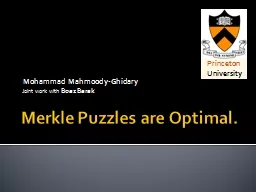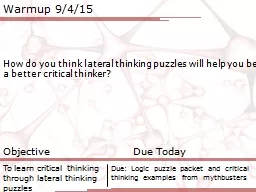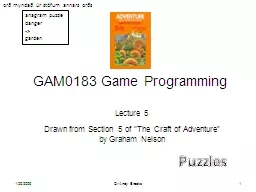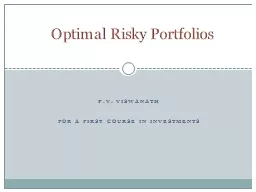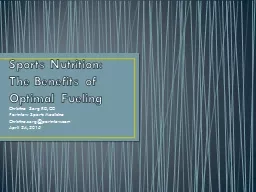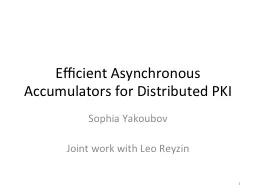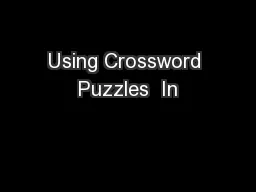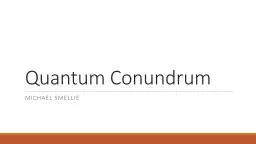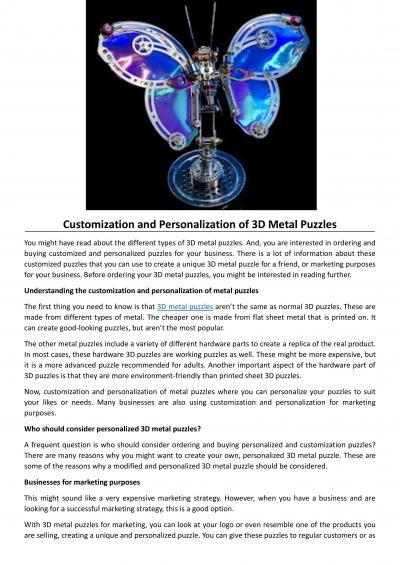PPT-Merkle Puzzles are Optimal.
Author : lindy-dunigan | Published Date : 2019-06-21
Mohammad MahmoodyGhidary Joint work with Boaz Barak Princeton University Spoiler Key Exchange Random Oracle The Result Alice Bob key key Security For every eavesdropping
Presentation Embed Code
Download Presentation
Download Presentation The PPT/PDF document "Merkle Puzzles are Optimal." is the property of its rightful owner. Permission is granted to download and print the materials on this website for personal, non-commercial use only, and to display it on your personal computer provided you do not modify the materials and that you retain all copyright notices contained in the materials. By downloading content from our website, you accept the terms of this agreement.
Merkle Puzzles are Optimal.: Transcript
Download Rules Of Document
"Merkle Puzzles are Optimal."The content belongs to its owner. You may download and print it for personal use, without modification, and keep all copyright notices. By downloading, you agree to these terms.
Related Documents

